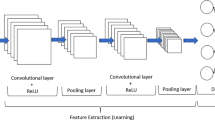Abstract
Synthetic aperture radars (SAR) are a type of high-resolution radars that are used for terrestrial and airborne imaging. They use a moving source to simulate a large antenna aperture, thereby providing a high-quality map of the surroundings. They are popular due to their wide variety of applications in airborne naval and defense systems as well as topography and seismology. In defense applications, they are mainly used for reconnaissance and mapping of enemy targets such as armored vehicles, tanks, and runways. In recent times, there has been a heavy need for machine learning algorithms that are capable of automatically recognizing the targets detected by the SAR without human input. Such algorithms demand large-scale labeled datasets for training, validation and testing. Due to the nature of the SAR, acquisition and collection of these labeled datasets is quite a tedious and expensive task requiring a lot of man hours. Thus, alternate methods to produce new SAR image data are needed. In this paper, generative adversarial networks (GAN) are used to generate new spotlight SAR images from a limited pre-existing dataset. To quantitatively verify the effectiveness of the images produced by the GAN, a novel convolutional neural network (CNN) is devised and trained on the Moving and Stationary Target Acquisition and Recognition (MSTAR) dataset images.









Similar content being viewed by others
References
Anas H, Majdoulayne H, Chaimae A, Nabil SM. Deep learning for sar image classification. In: Proceedings of SAI intelligent systems conference, Springer, 2019; pp. 890–898
Bao X, Pan Z, Liu L, Lei B. Sar image simulation by generative adversarial networks. In: IGARSS 2019 - 2019 IEEE international geoscience and remote sensing symposium, 2019; pp. 9995–9998
Chen S, Wang H, Xu F, Jin Y. Target classification using the deep convolutional networks for sar images. IEEE Trans Geosci Remote Sens. 2016;54(8):4806–17.
Chou K, Cheng Y, Chen W, Chen Y. Multi-task cascaded and densely connected convolutional networks applied to human face detection and facial expression recognition system. In: 2019 International automatic control conference (CACS), 2019; pp. 1–6
Coman C, Thaens R. A deep learning sar target classification experiment on mstar dataset. In: 2018 19th international radar symposium (IRS), 2018; pp. 1–6
Ding B, Wen G, Ye F, Huang X, Yang X. Feature extraction based on 2d compressive sensing for sar automatic target recognition. In: 2017 11th European conference on antennas and propagation (EUCAP), 2017; pp. 1219–1223
Fawzi A, Samulowitz H, Turaga D, Frossard P. Adaptive data augmentation for image classification. In: 2016 IEEE International conference on image processing (ICIP), 2016; pp. 3688–3692
Guo J, Lei B, Ding C, Zhang Y. Synthetic aperture radar image synthesis by using generative adversarial nets. IEEE Geosci Remote Sens Lett. 2017;14(7):1111–5.
Huang G, Liu Z, Van Der Maaten L, Weinberger KQ. Densely connected convolutional networks. In: 2017 IEEE conference on computer vision and pattern recognition (CVPR), 2017; pp. 2261–2269
Huang H, Zhang F, Zhou Y, Yin Q, Hu W. High resolution sar image synthesis with hierarchical generative adversarial networks. In: IGARSS 2019–2019 IEEE international geoscience and remote sensing symposium, 2019; pp. 2782–2785
Goodfellow I. Generative adversarial nets. Advances in neural information processing systems. Cambridge: MIT Press; 2014. p. 2672–80.
Jung E, Chikontwe P, Zong X, Lin W, Shen D, Park SH. Enhancement of perivascular spaces using densely connected deep convolutional neural network. IEEE Access. 2019;7:18382–91.
Krizhevsky A, Sutskever I, Hinton GE. Imagenet classification with deep convolutional neural networks. Advances in neural information processing systems. Cambridge: MIT Press; 2012. p. 1097–105.
Lu Q, Jiang H, Li G, Ye W. Data augmentation method of sar image dataset based on wasserstein generative adversarial networks. In: 2019 International conference on electronic engineering and informatics (EEI), 2019; pp. 488–490
Ruohong H, Ruliang Y. Sar target recognition based on mrf and gabor wavelet feature extraction. In: IGARSS 2008–2008 IEEE international geoscience and remote sensing symposium, vol 2, 2008; pp. II-907–II-910
Salimans T, Goodfellow I, Zaremba W, Cheung V, Radford A, Chen X. Improved techniques for training gans. Advances in neural information processing systems. Cambridge: MIT Press; 2016. p. 2226–34.
Shang R, Wang J, Jiao L, Stolkin R, Hou B, Li Y. Sar targets classification based on deep memory convolution neural networks and transfer parameters. IEEE J Sel Top Appl Earth Obs Remote Sens. 2018;11(8):2834–46.
Szegedy C, Wei L, Yangqing J, Sermanet P, Reed S, Anguelov D, Erhan D, Vanhoucke V, Rabinovich A. Going deeper with convolutions. In: 2015 IEEE conference on computer vision and pattern recognition (CVPR), 2015; pp. 1–9
Touafria M, Yang Q. Sar image classification via capsule networks. In: Proceedings of the 3rd international conference on computer science and application engineering, 2019; pp. 1–5
Wang J, Zheng T, Lei P, Bai X. Ground target classification in noisy sar images using convolutional neural networks. IEEE J Sel Top Appl Earth Obs Remote Sens. 2018;11(11):4180–92.
Wang Y, Han P, Lu X, Wu R, Huang J. The performance comparison of adaboost and svm applied to sar atr. In: 2006 CIE international conference on radar, 2006; pp. 1–4
Yang Y, Qiu Y, Chao L. Automatic target classification—experiments on the mstar sar images. In: Sixth international conference on software engineering, artificial intelligence, networking and parallel/distributed computing and first ACIS international workshop on self-assembling wireless network, 2005; pp. 2–7.
Author information
Authors and Affiliations
Corresponding author
Ethics declarations
Conflict of Interest
The authors declare that they have no conflict of interest.
Ethical Approval
This paper does not contain any studies with human participants or animals performed by any of the authors.
Informed Consent
None.
Funding
No funding is involved.
Additional information
Publisher's Note
Springer Nature remains neutral with regard to jurisdictional claims in published maps and institutional affiliations.
This article is part of the topical collection “Computational Statistics” guest edited by Anish Gupta, Mike Hinchey, Vincenzo Puri, Zeev Zalevsky and Wan Abdul Rahim.
Rights and permissions
About this article
Cite this article
Bhamidipati, S.R.M., Srivatsa, C., Kanakapura Shivabasave Gowda, C. et al. Generation of SAR Images Using Deep Learning. SN COMPUT. SCI. 1, 355 (2020). https://doi.org/10.1007/s42979-020-00364-z
Received:
Accepted:
Published:
DOI: https://doi.org/10.1007/s42979-020-00364-z




